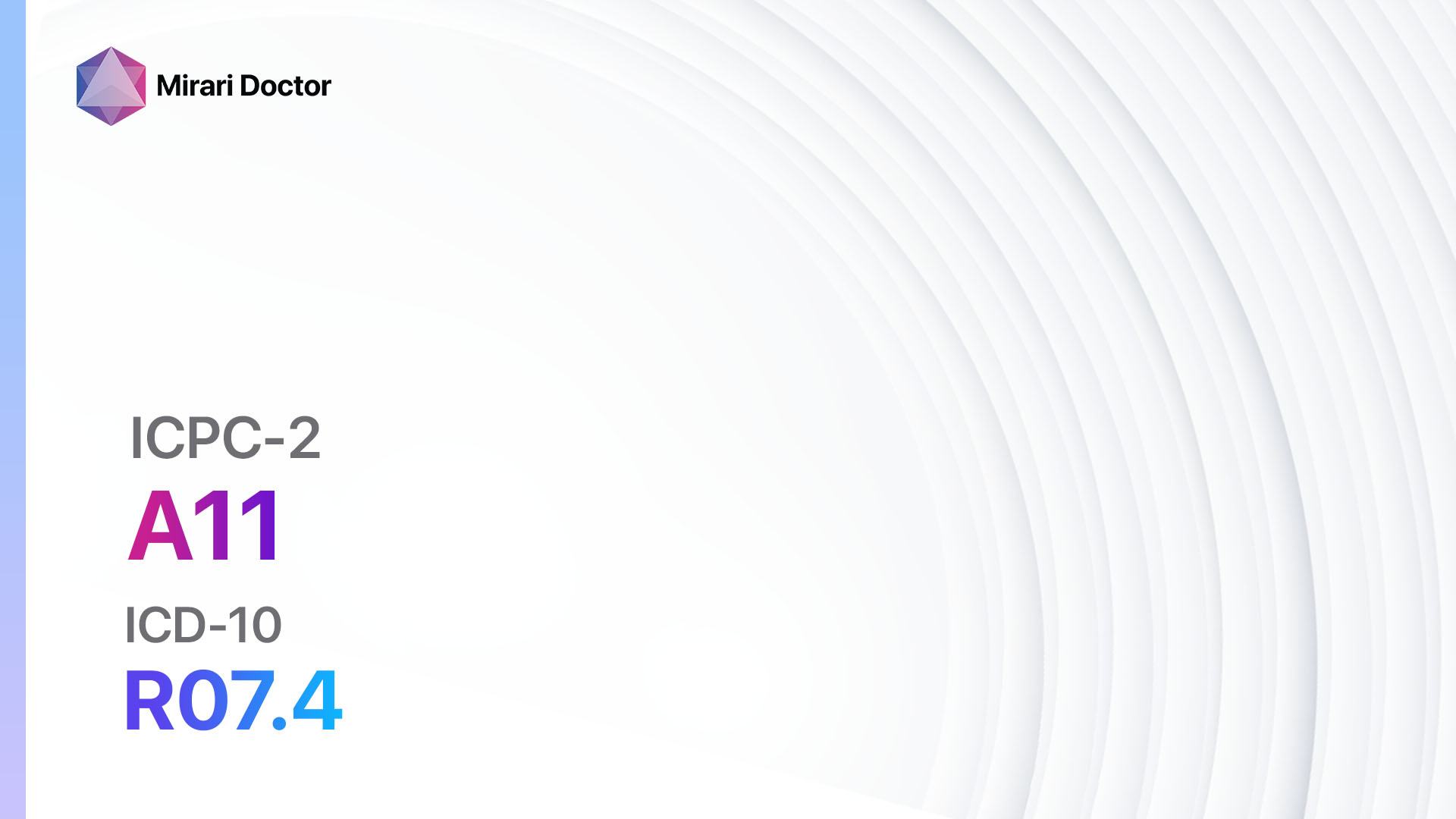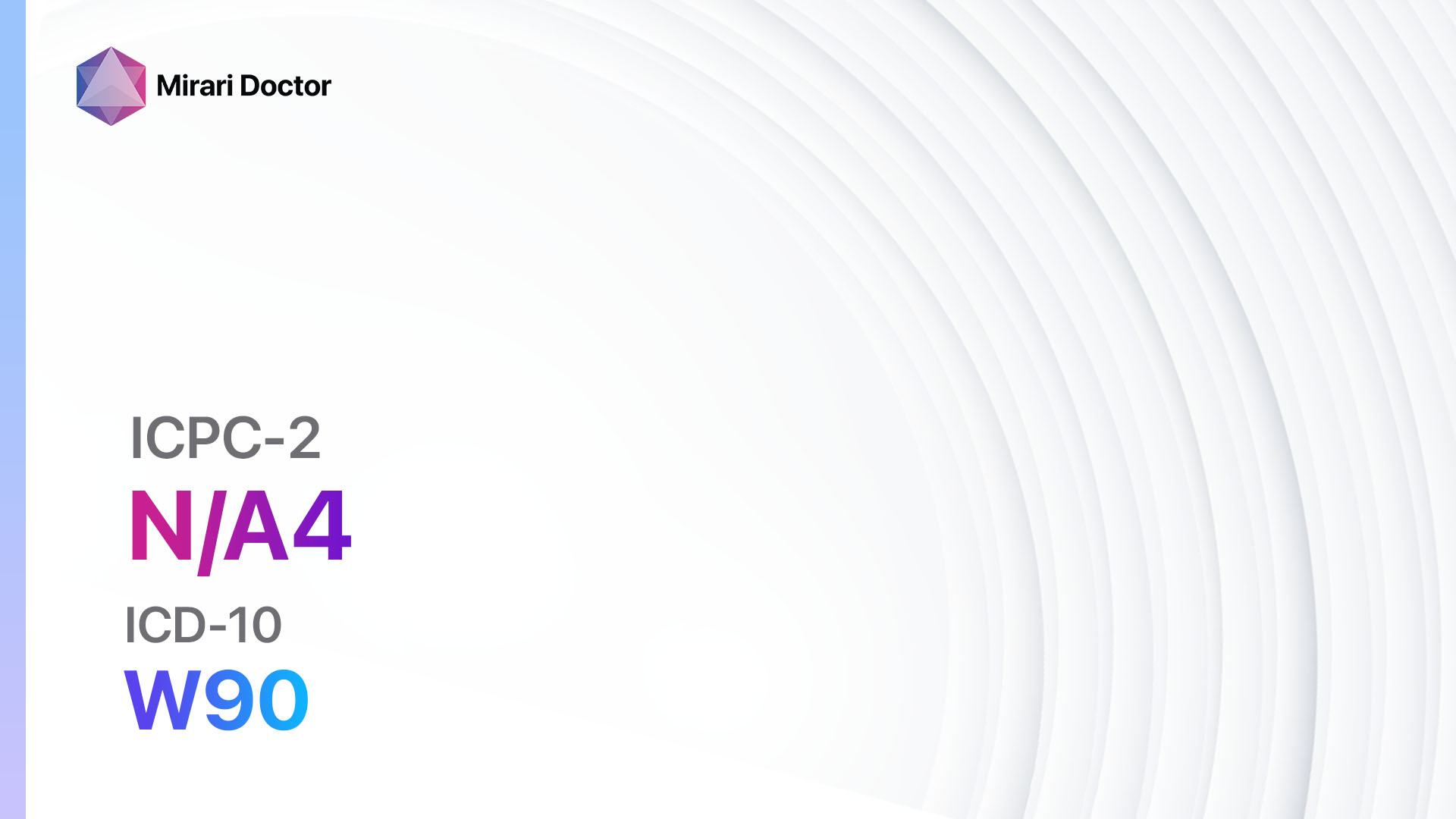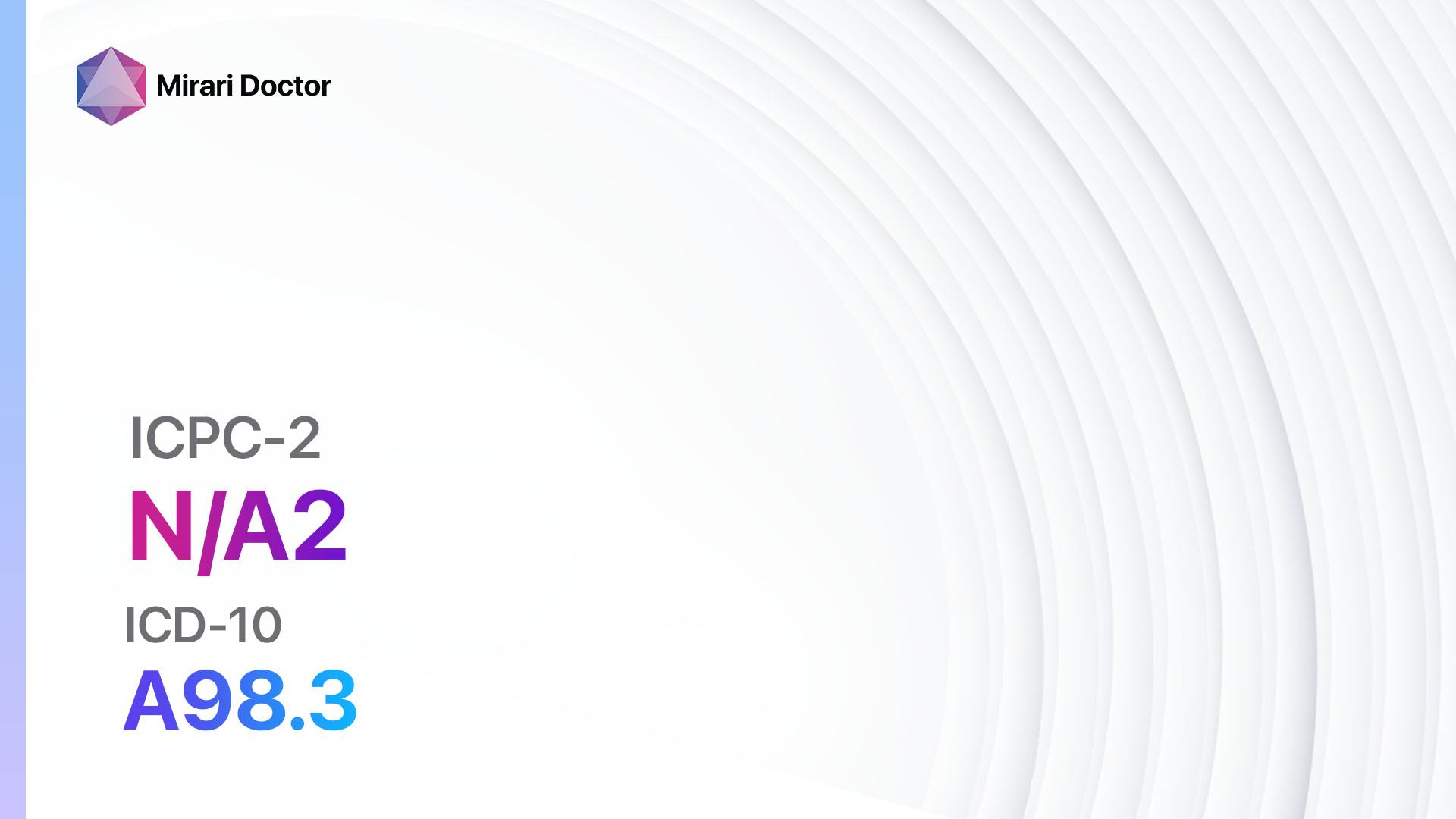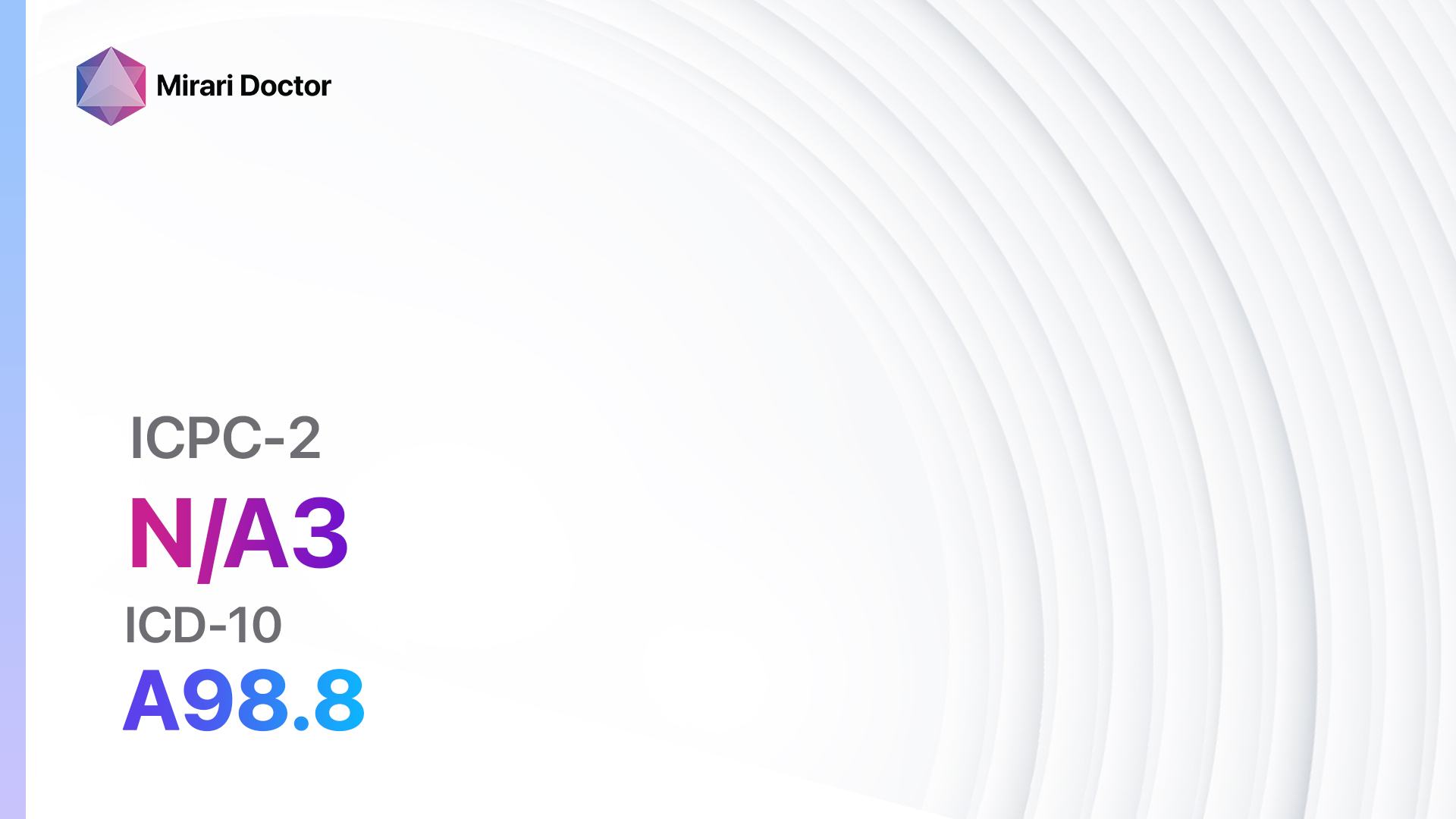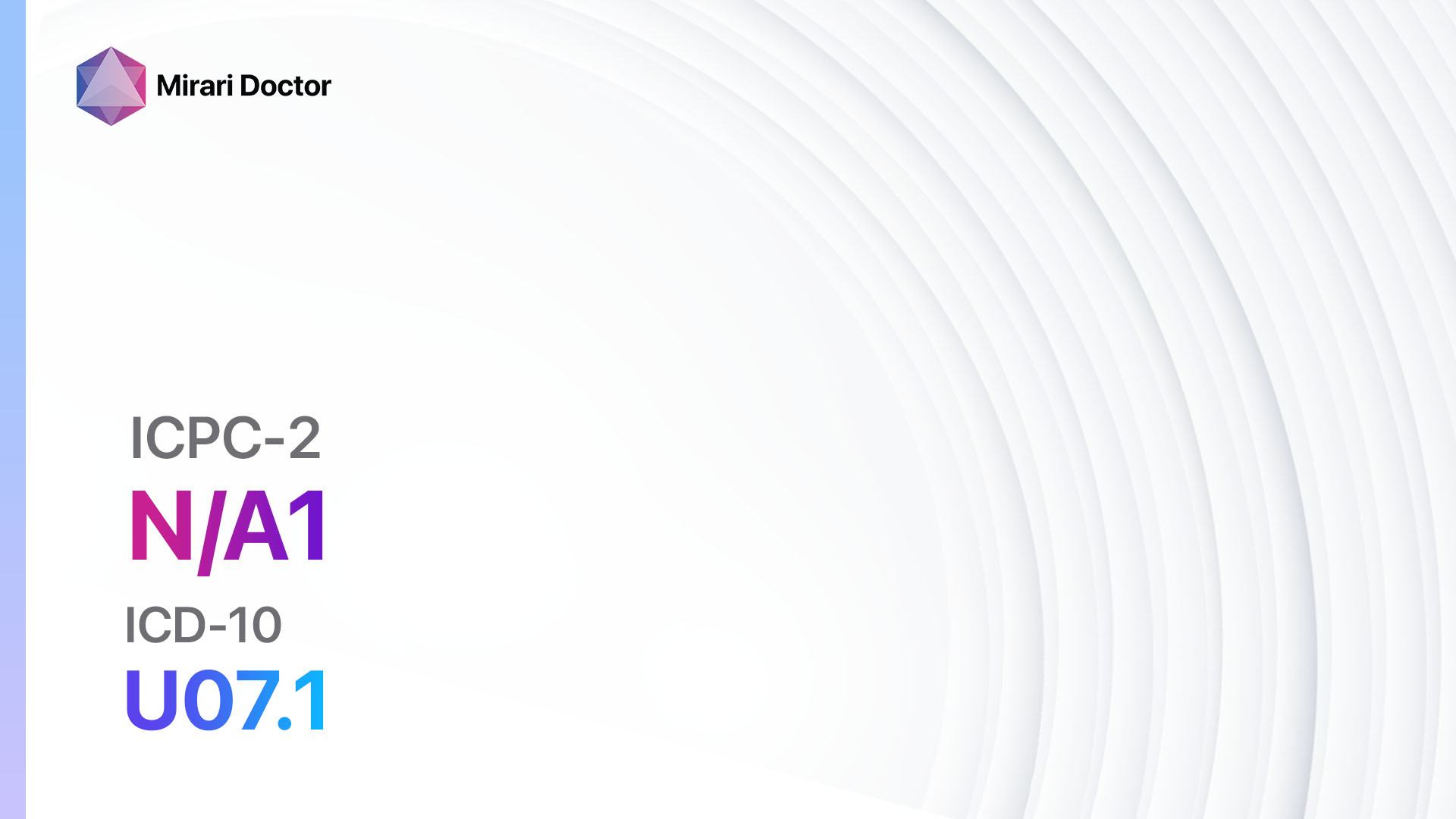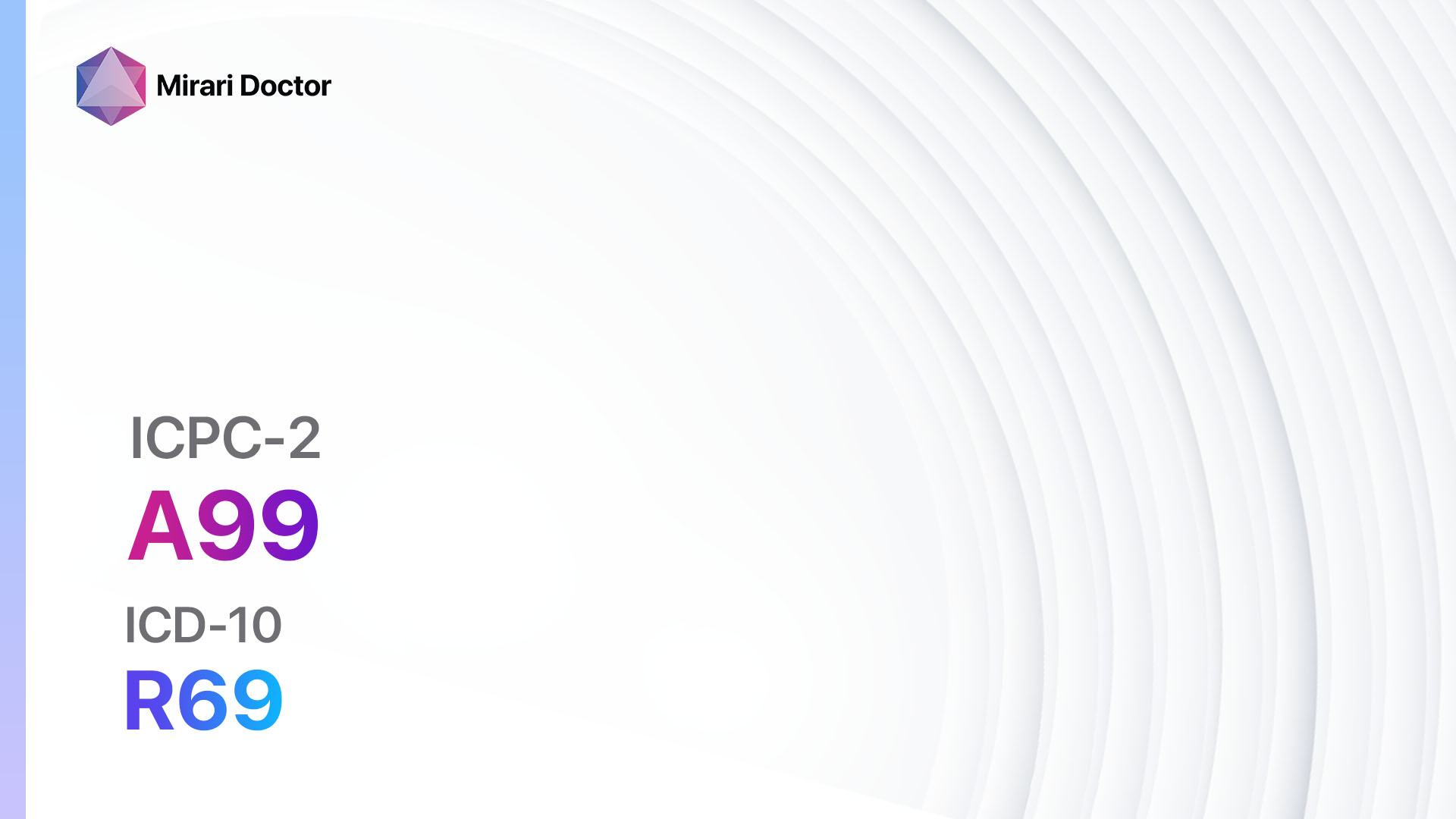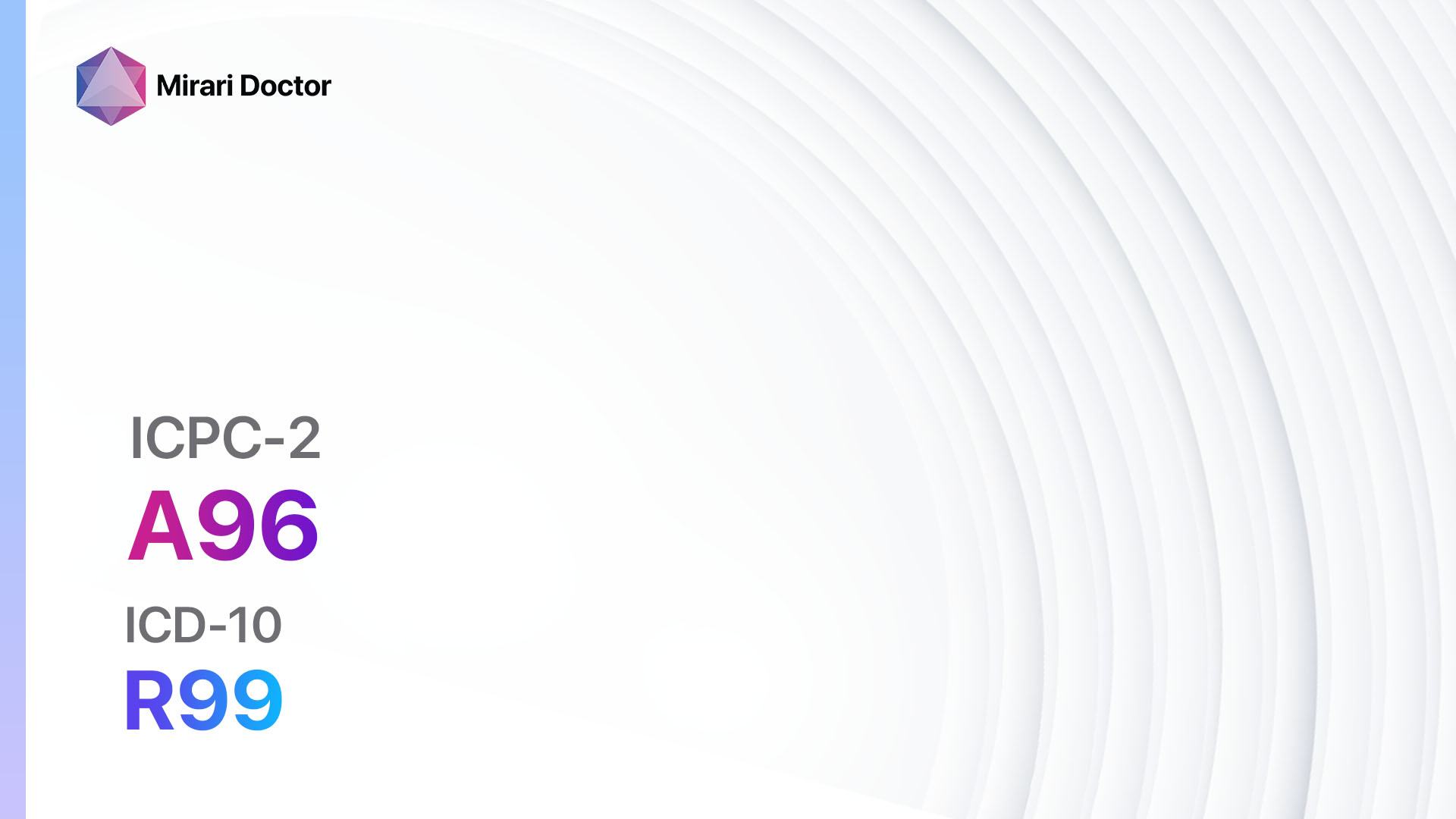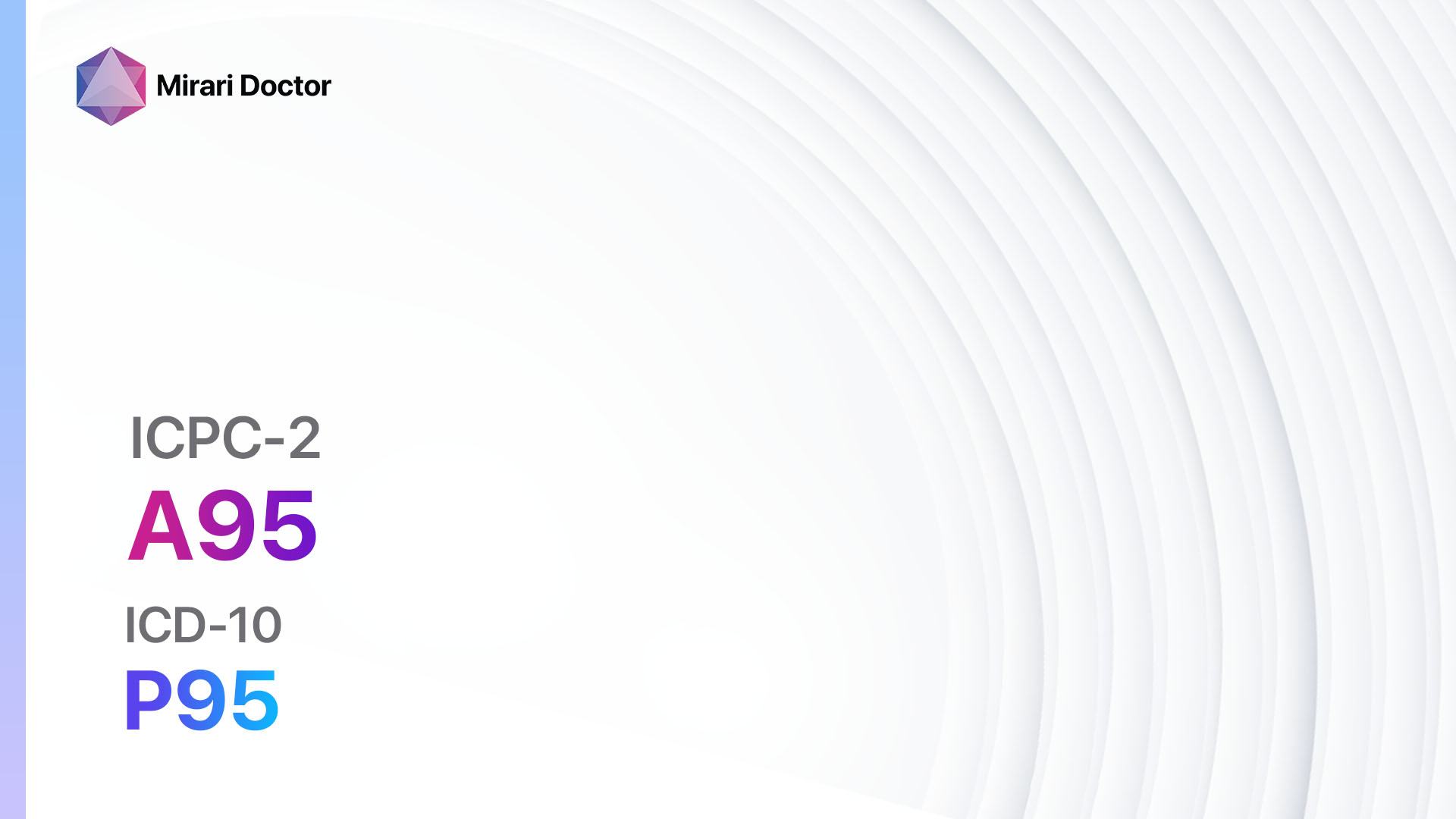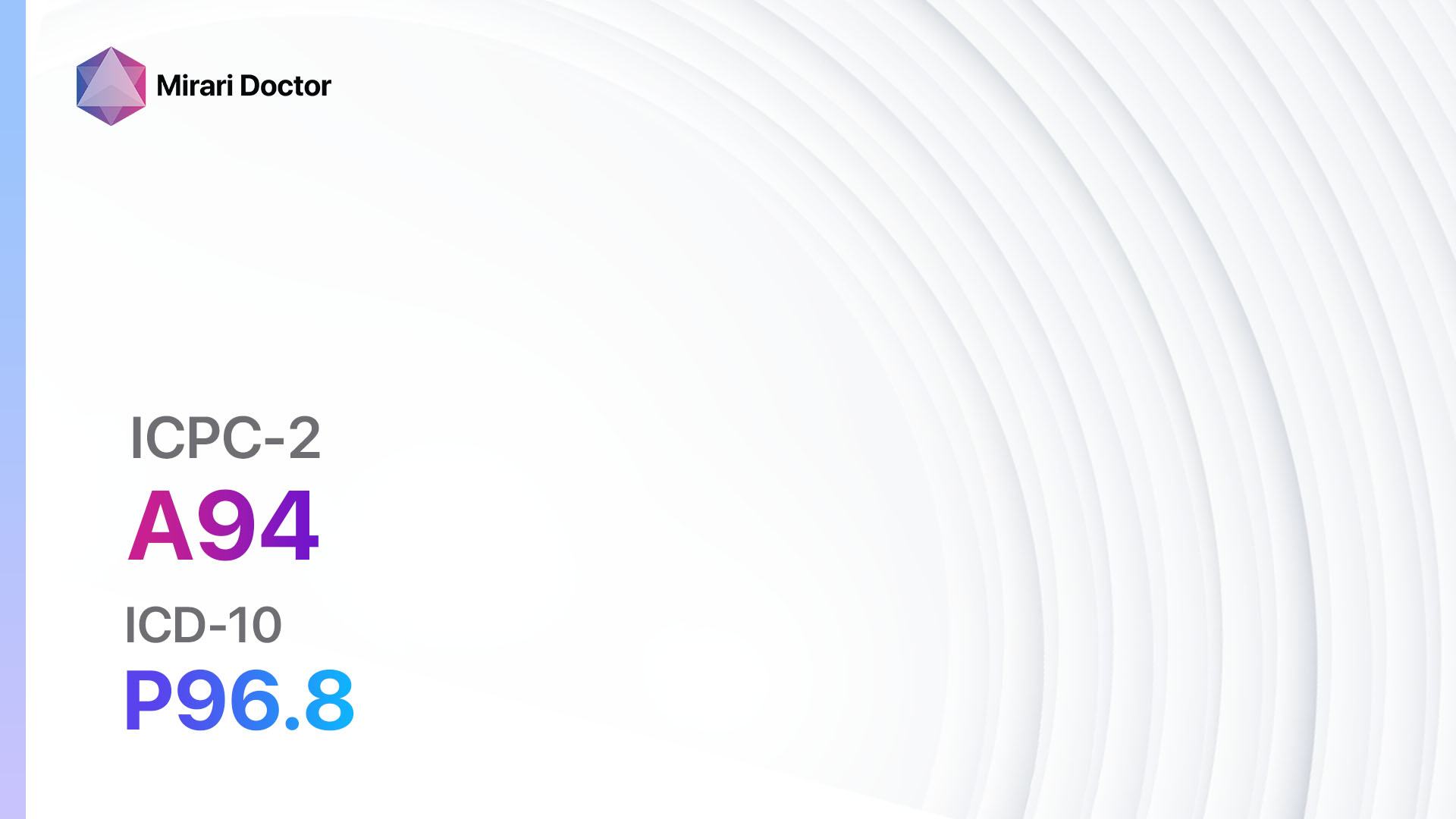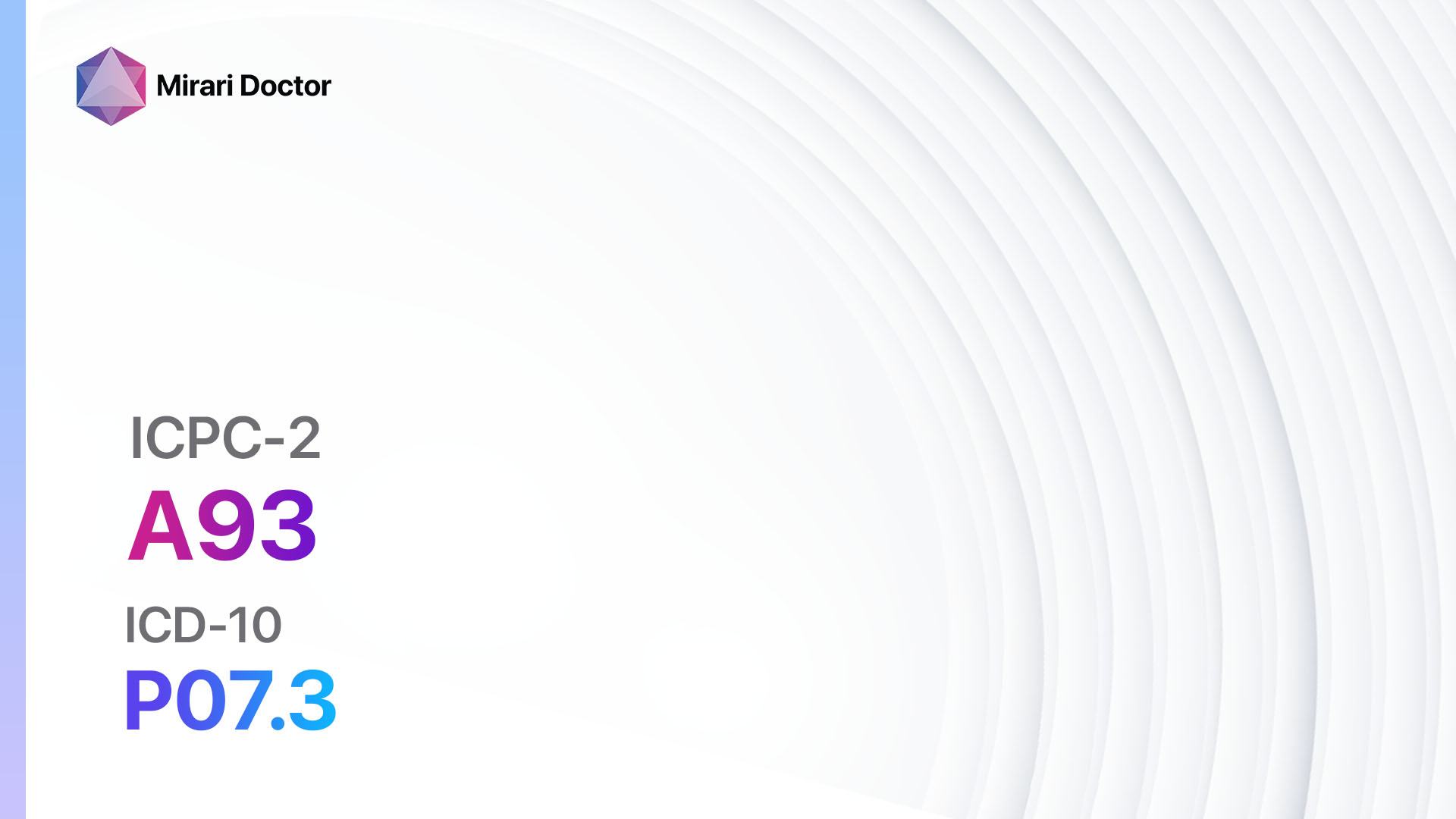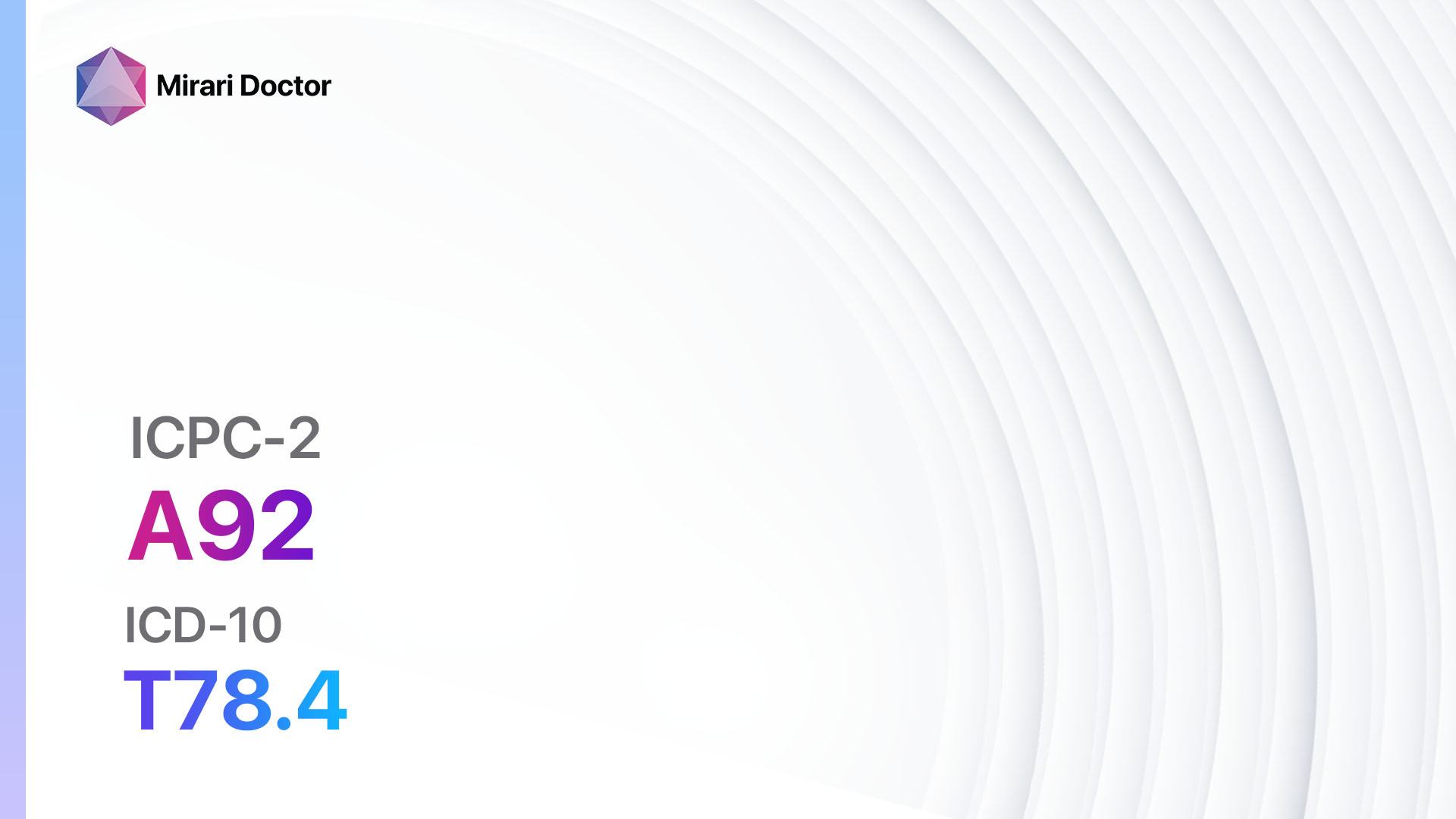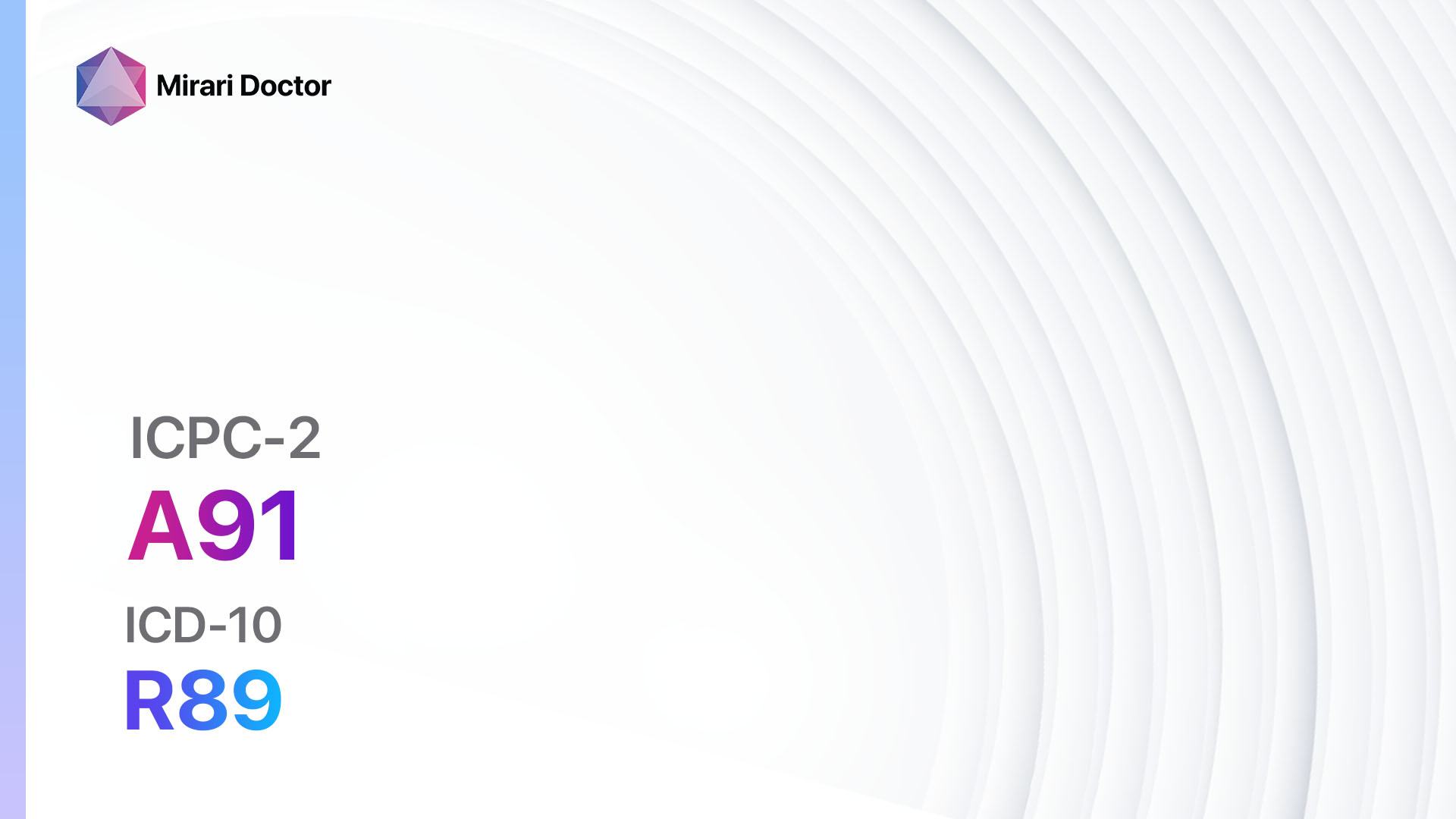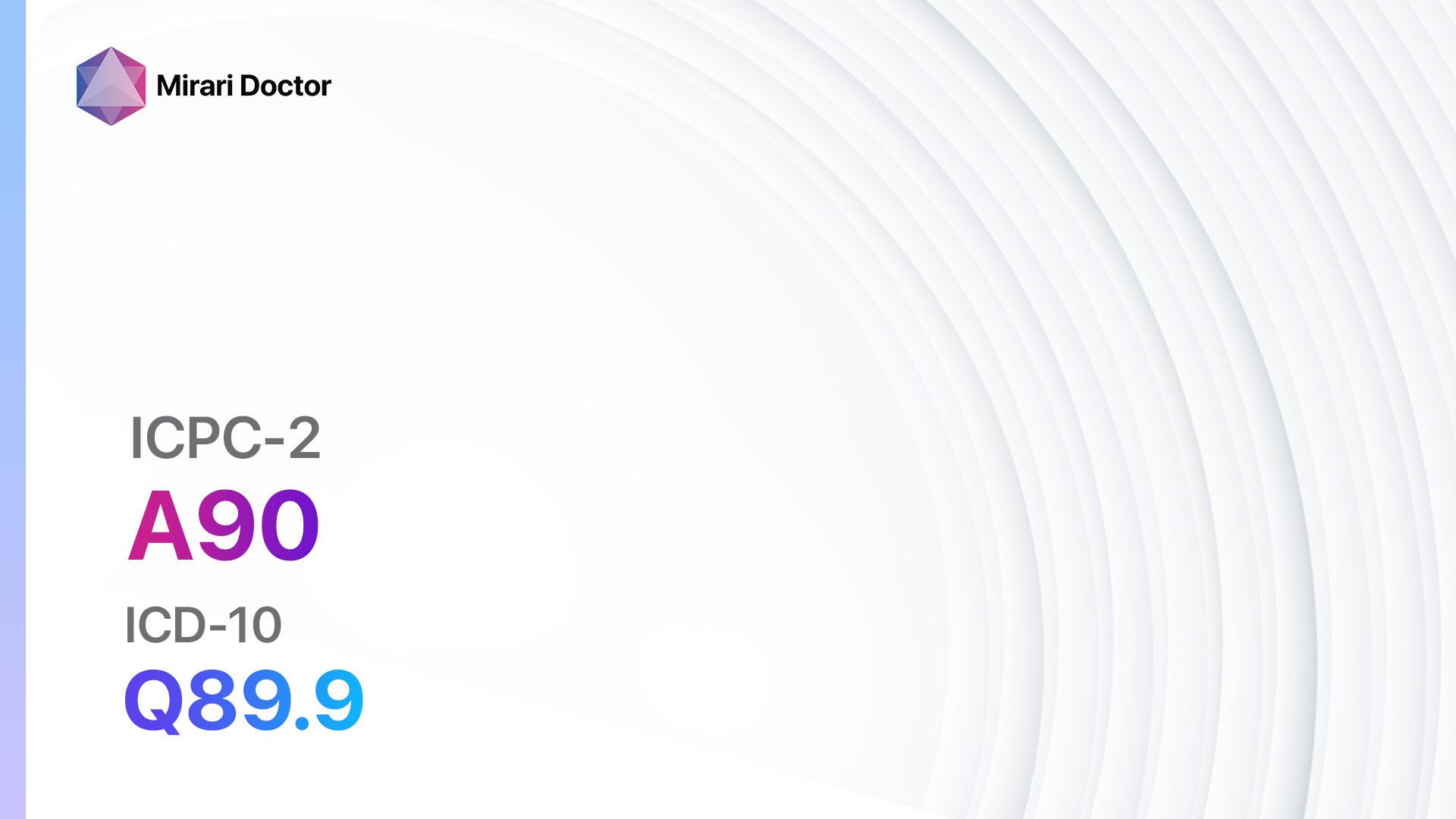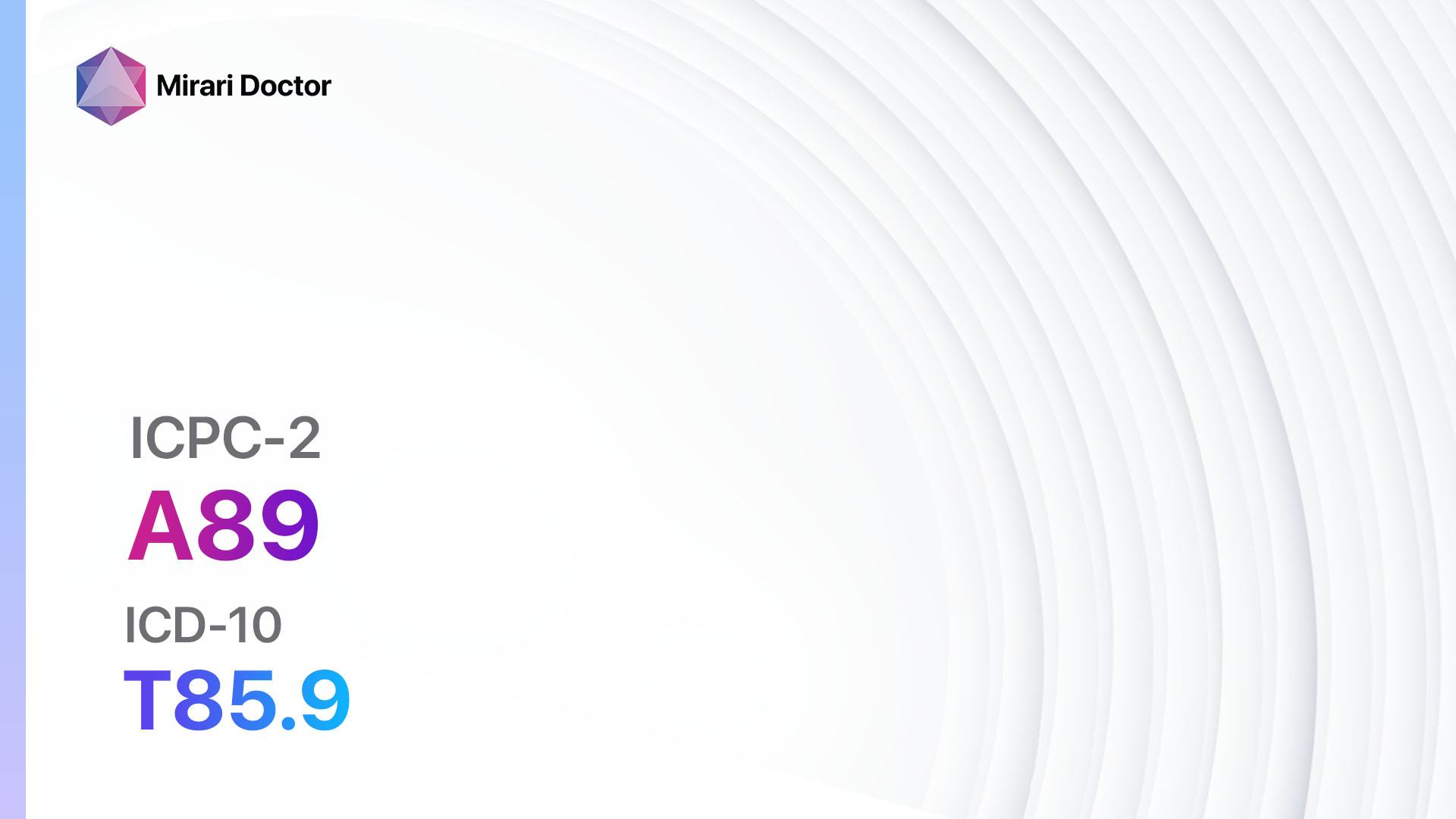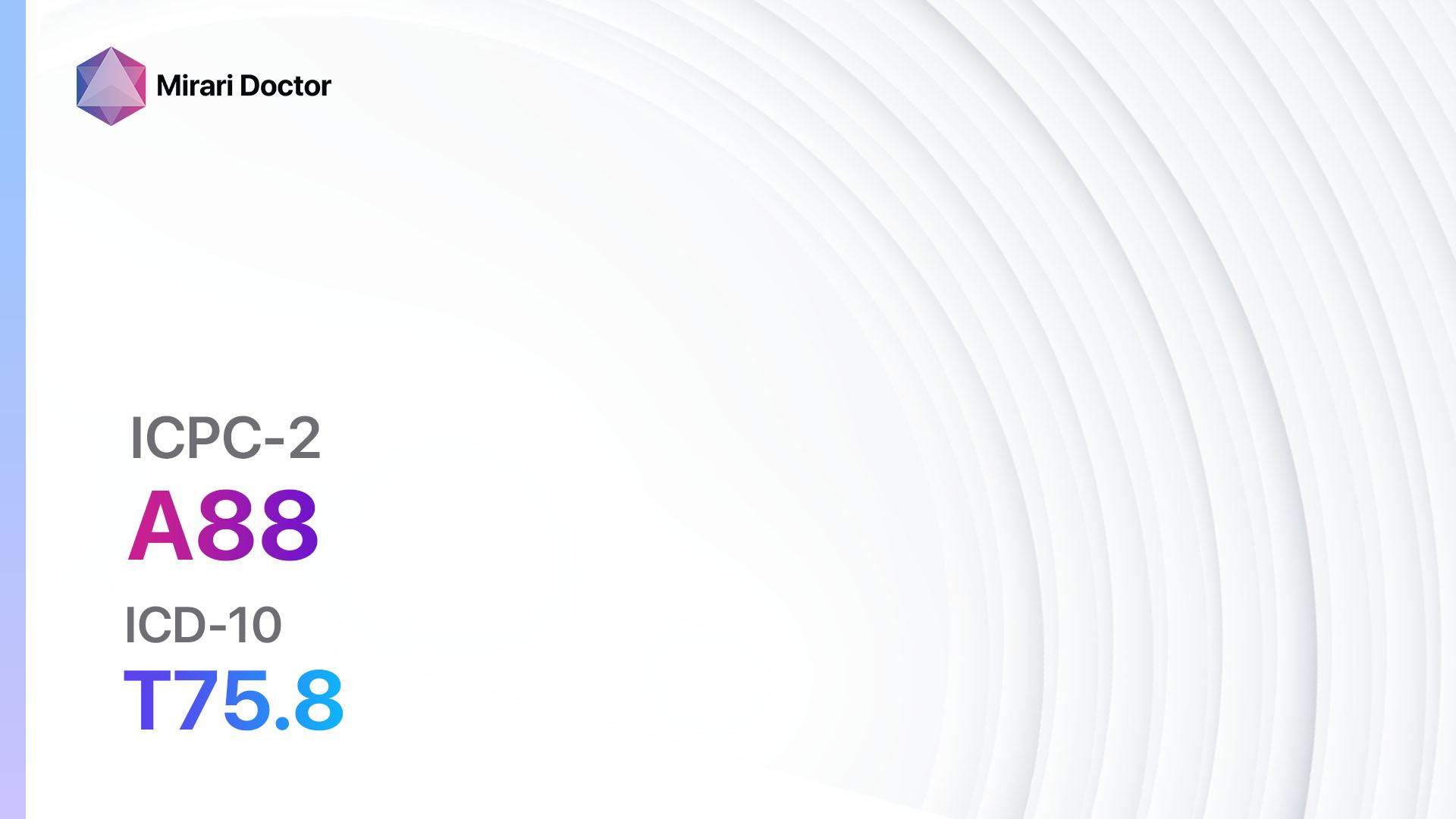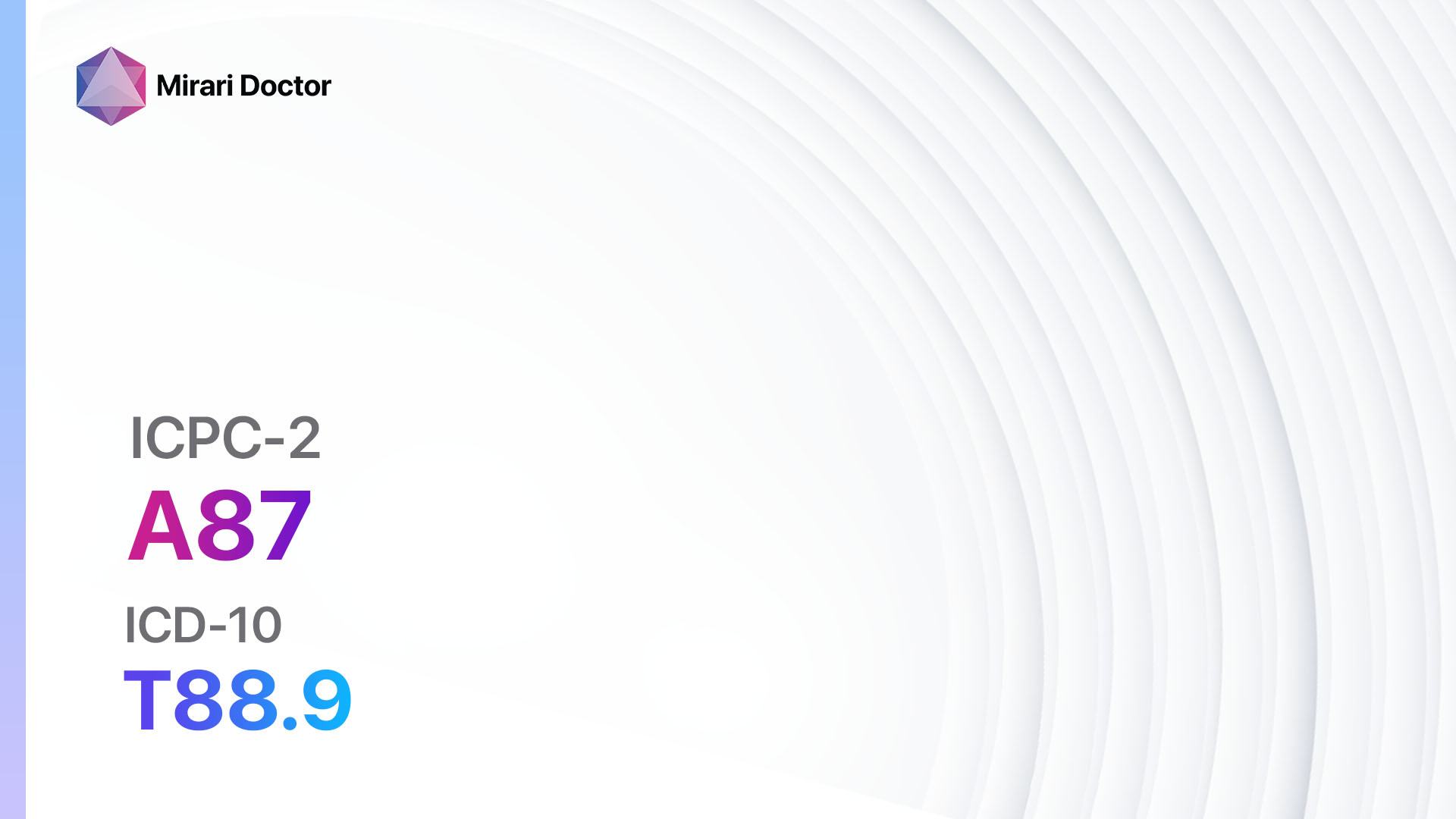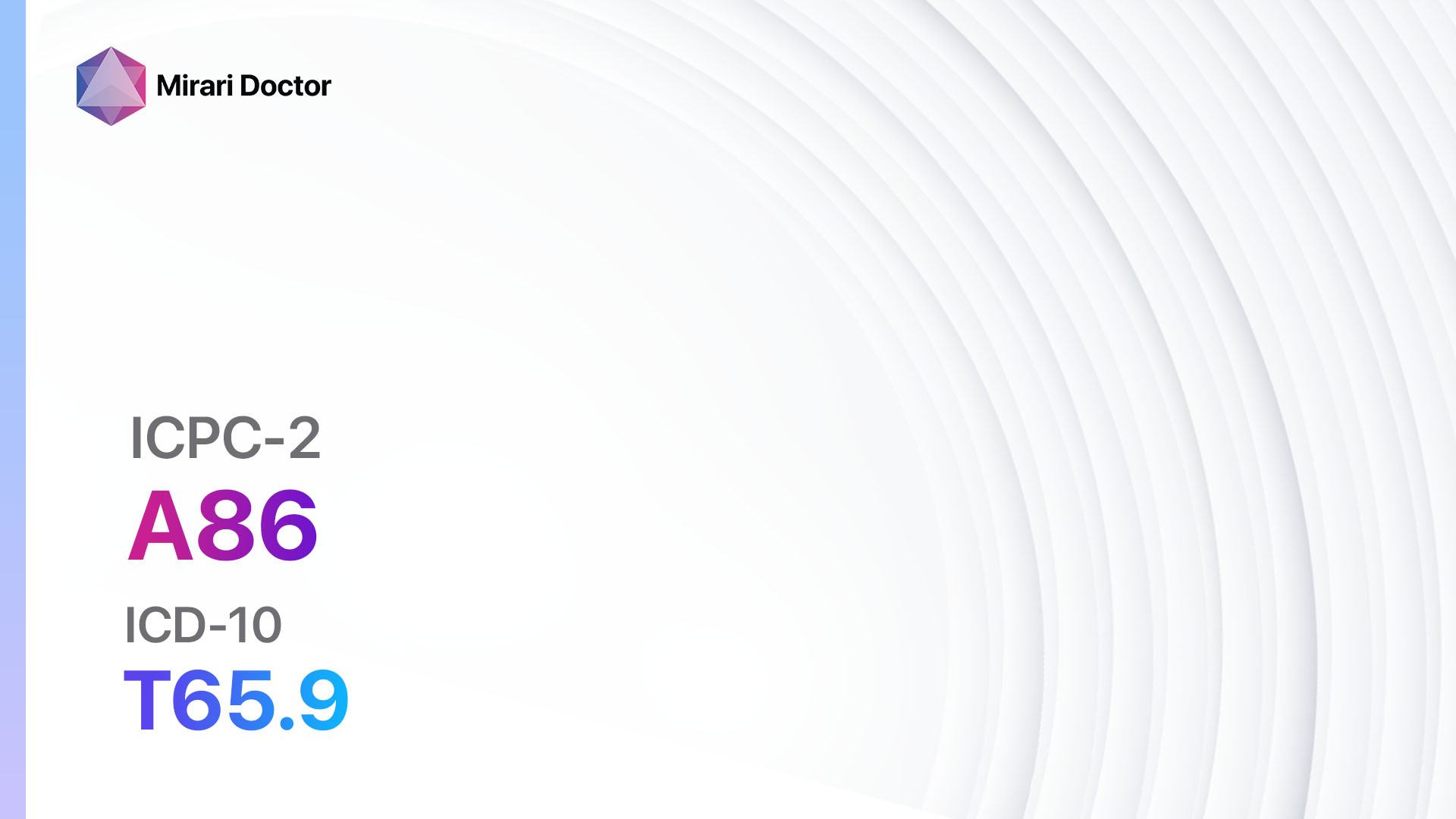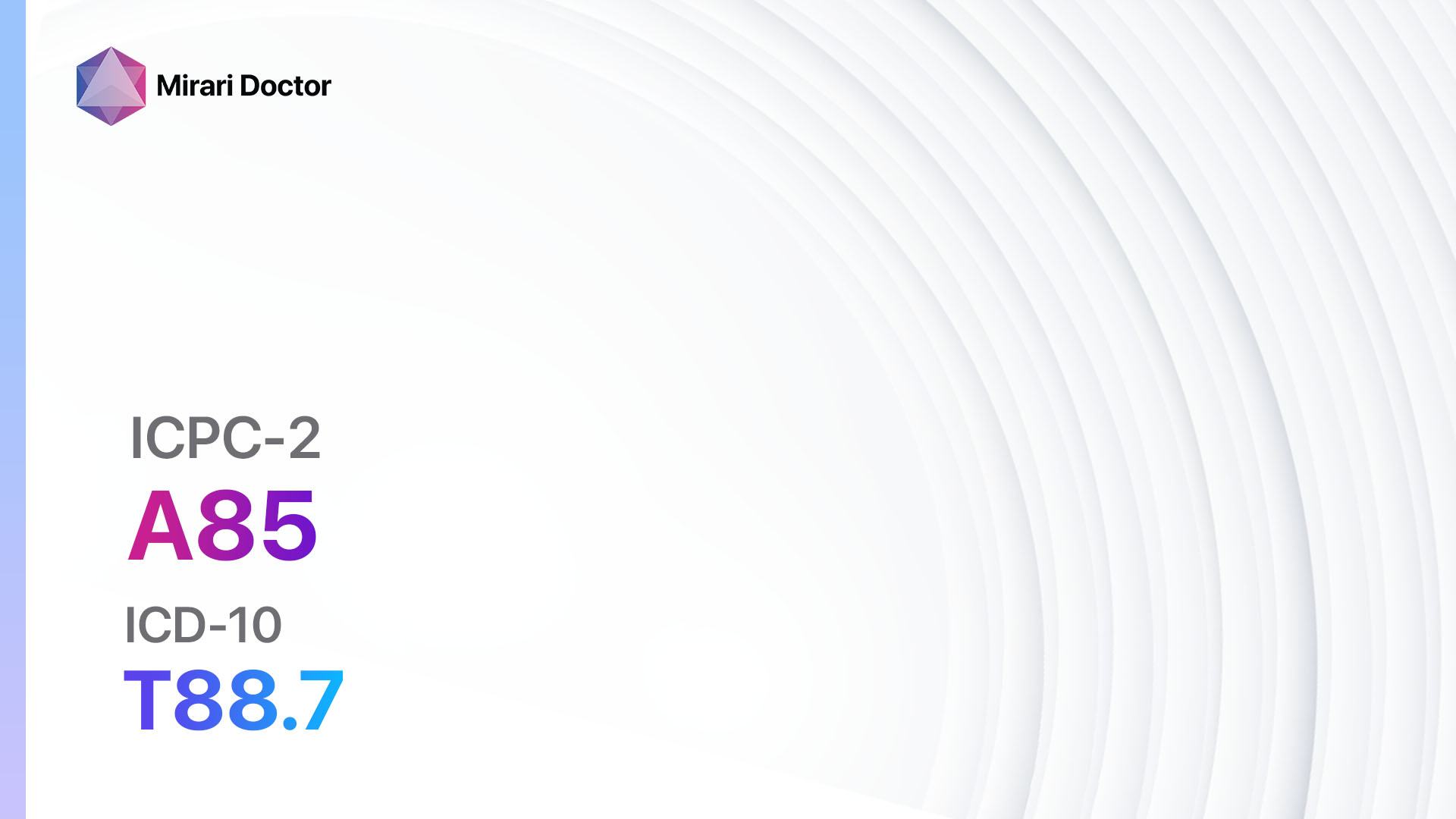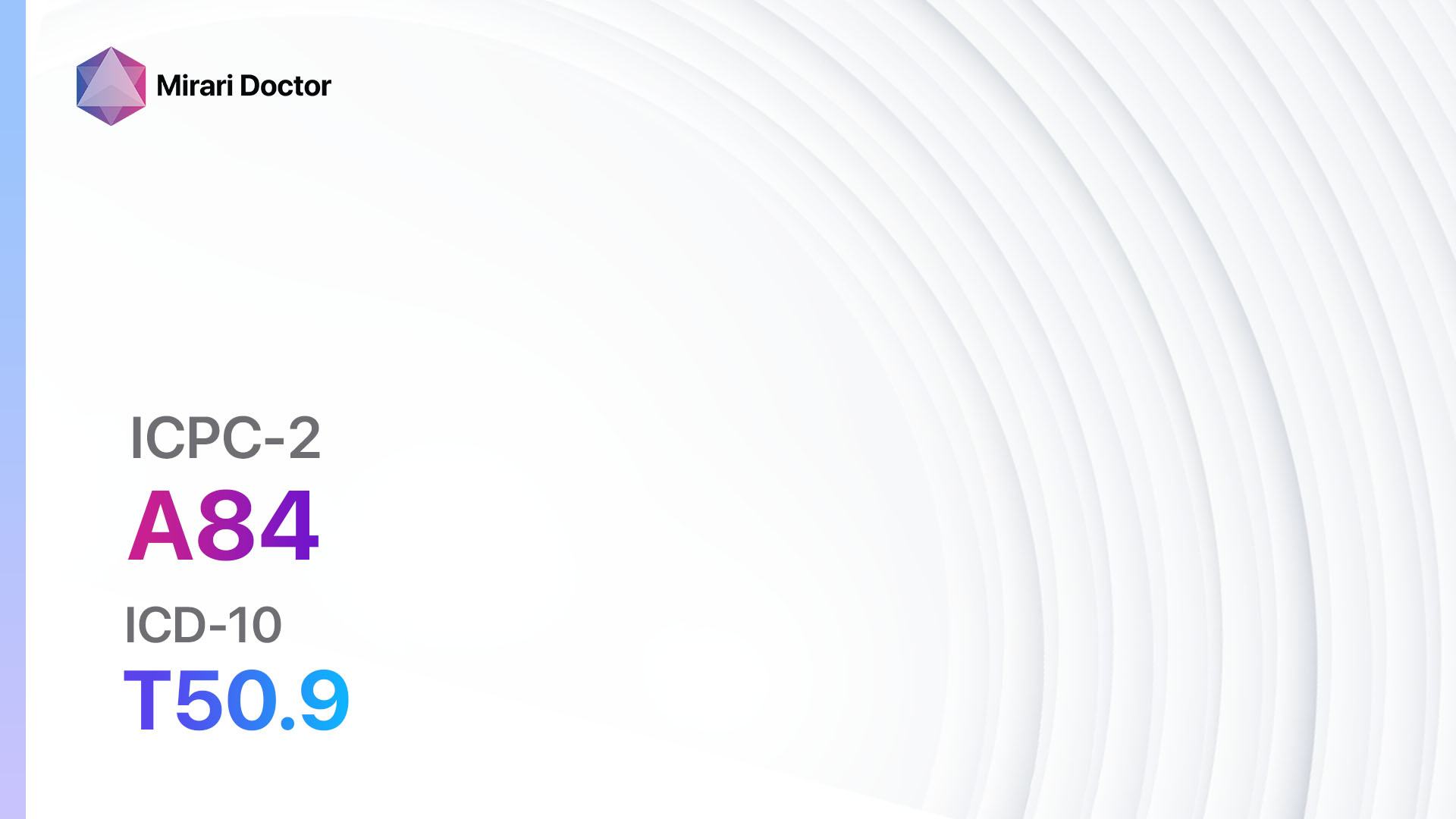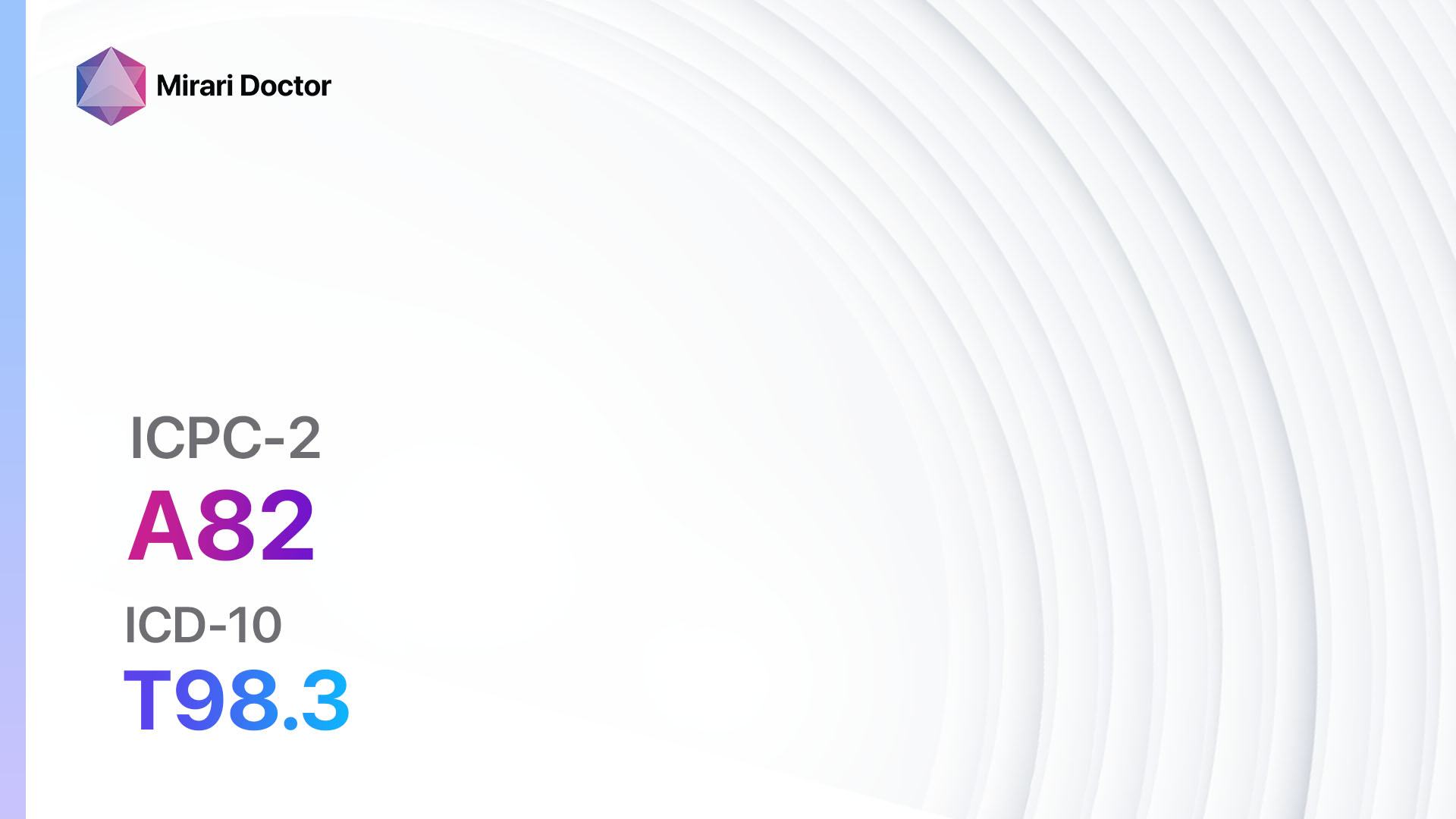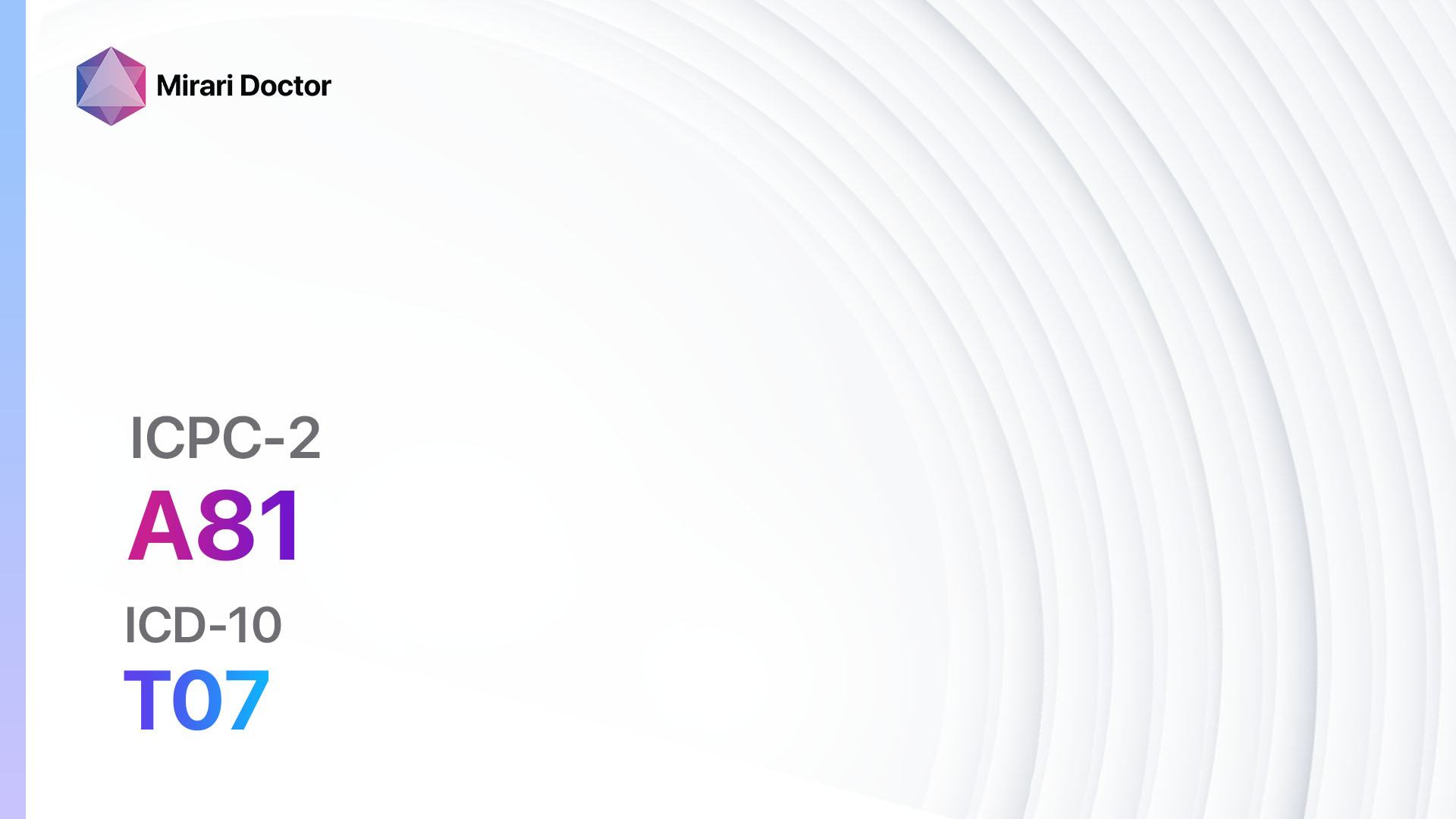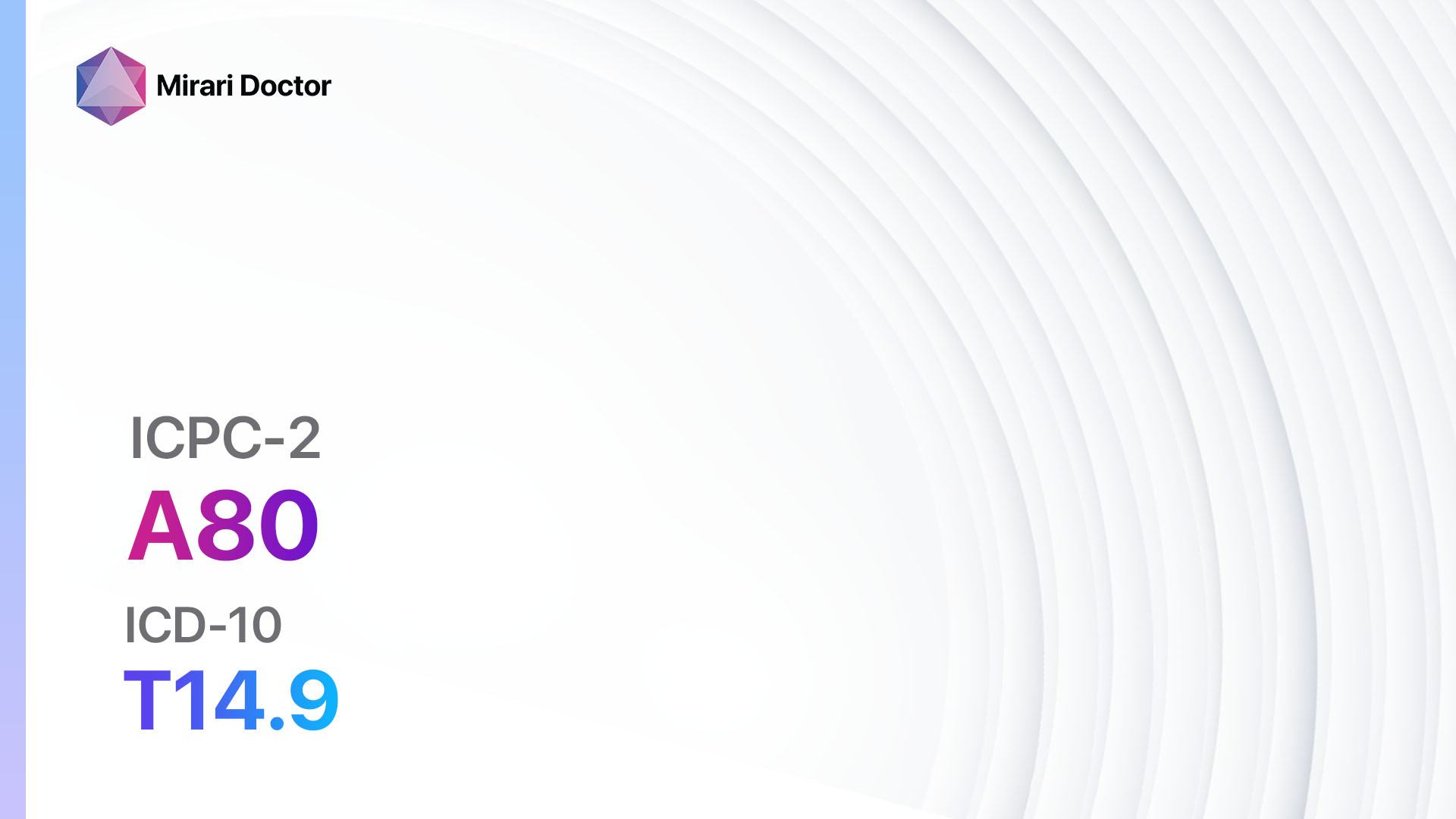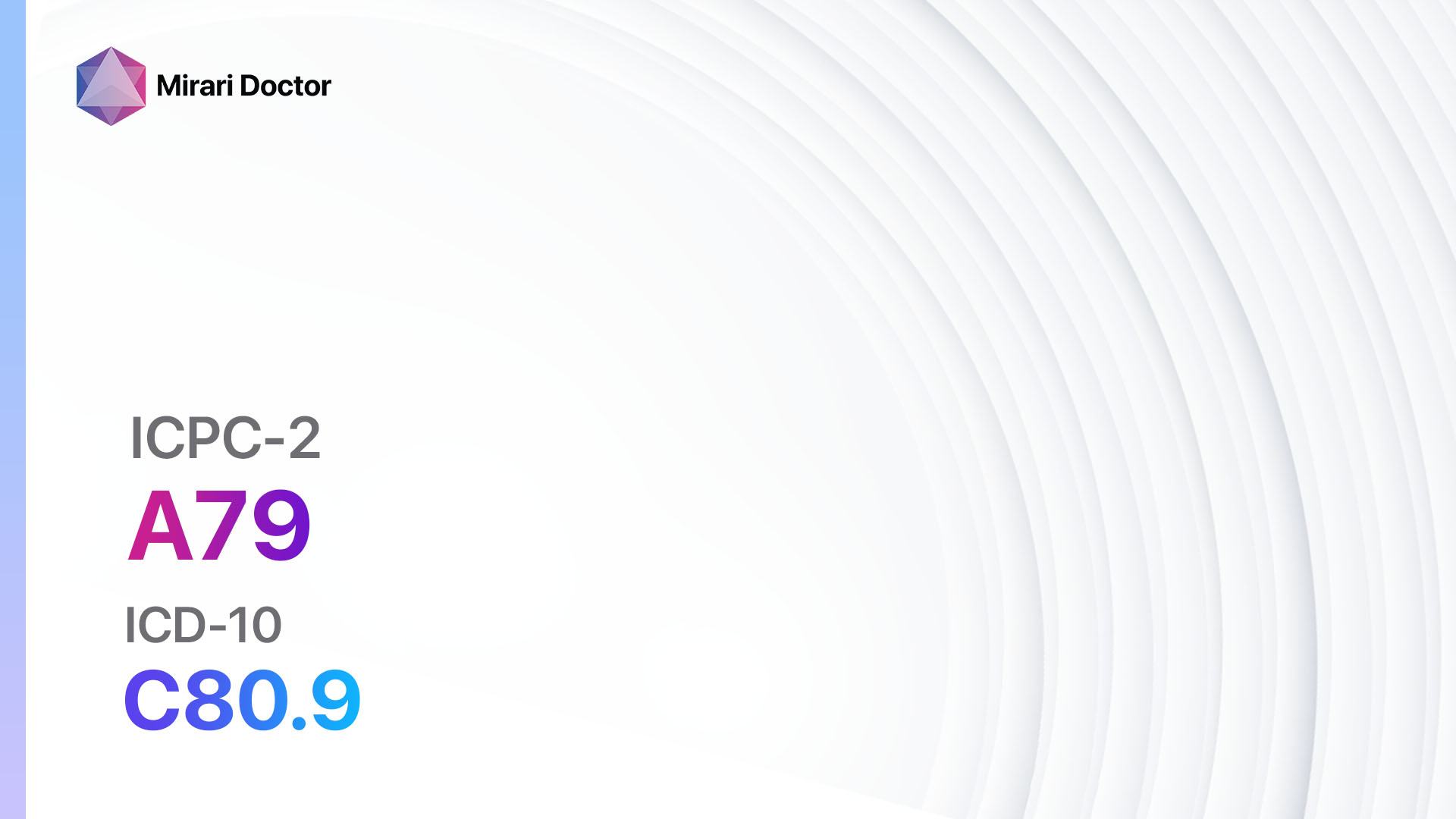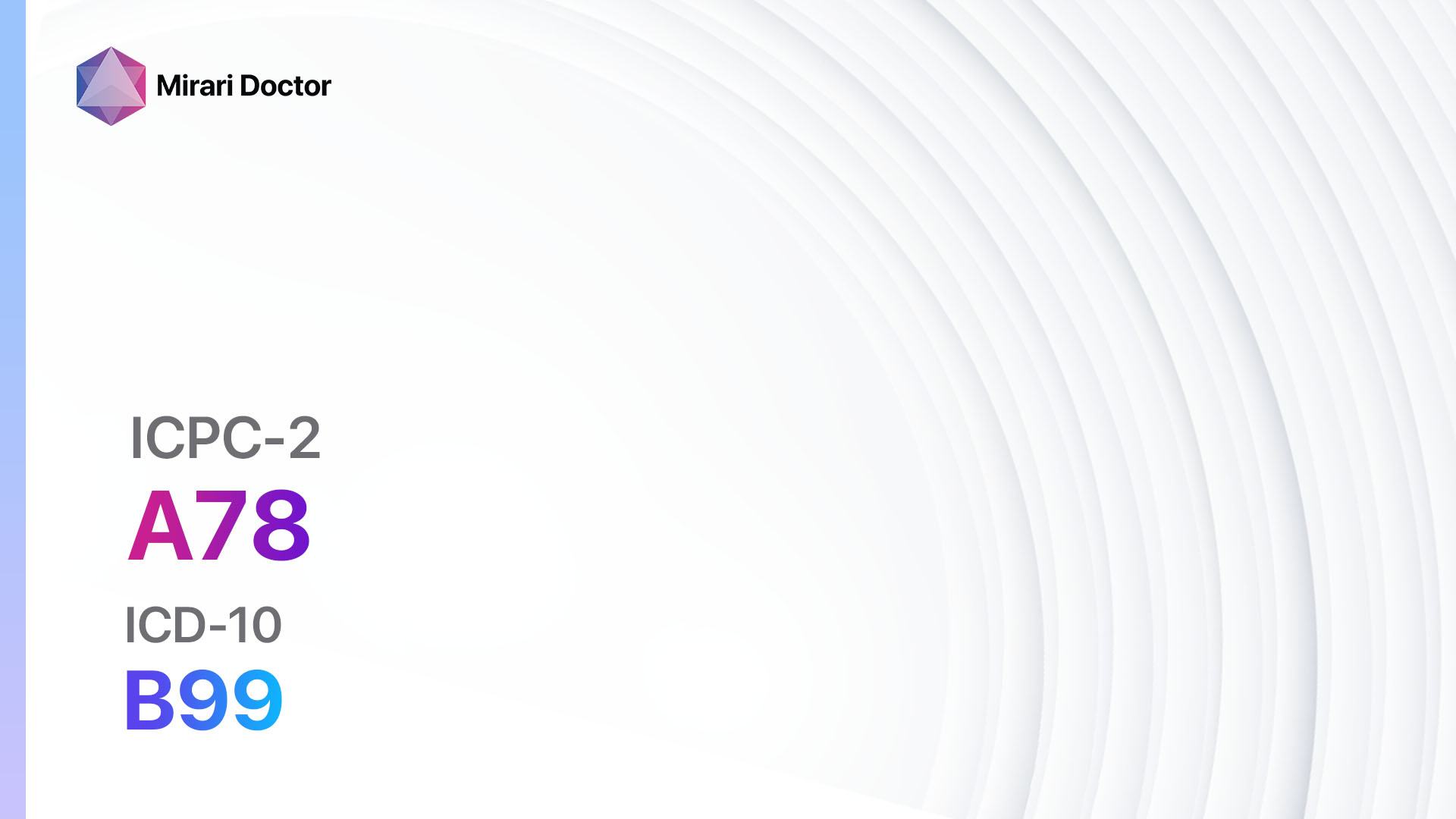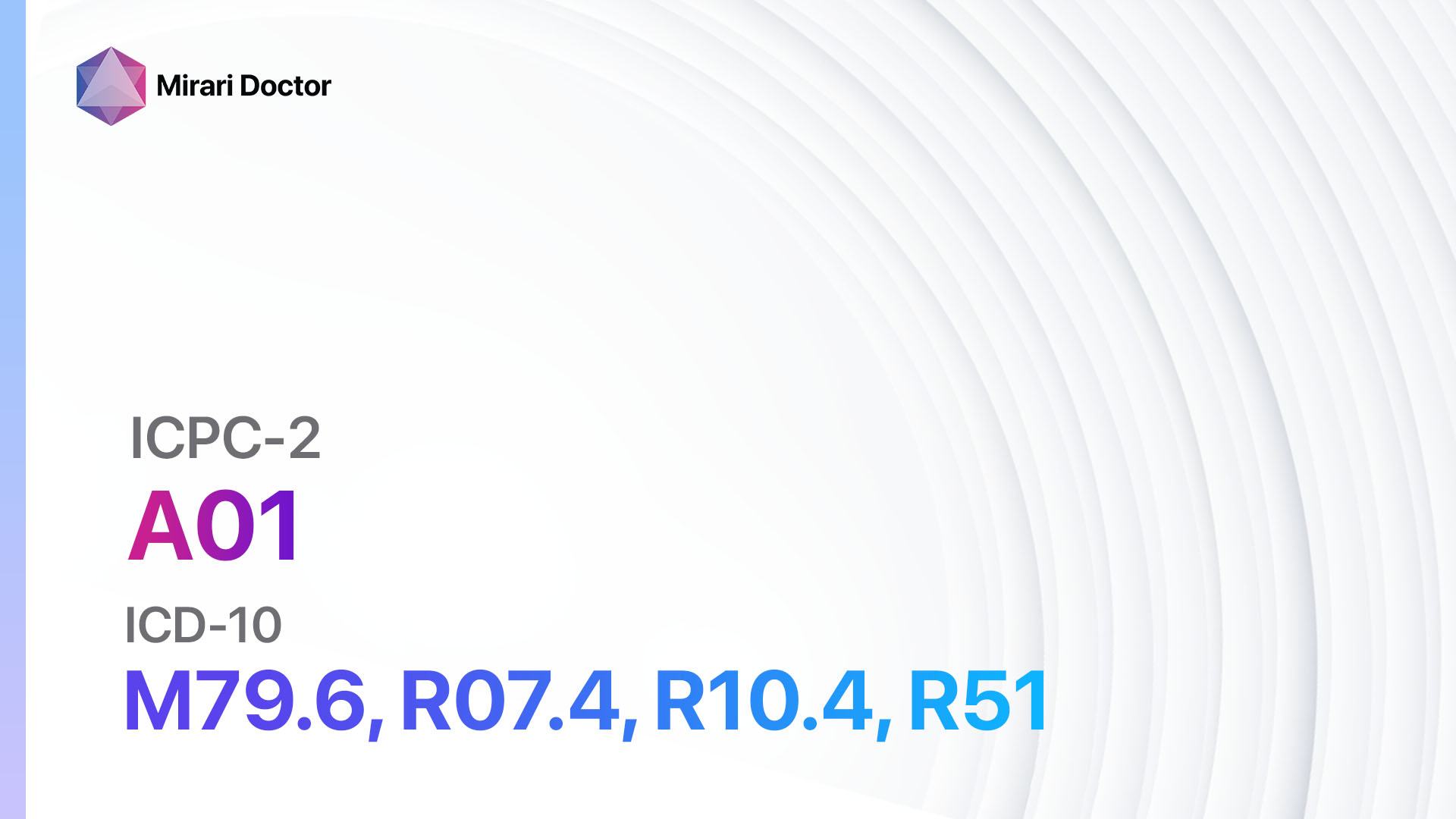
Introduction
Pain general/multiple sites refers to the presence of pain in various areas of the body. It can be a result of various underlying conditions or injuries. This guide aims to provide an overview of the symptoms, causes, diagnostic steps, possible interventions, and lifestyle interventions for pain general/multiple sites.[1][2]
Codes
- ICPC-2 Code: A01 Pain general/multiple sites[3]
- ICD-10 Code: M79.6 Pain in limb, R07.4 Chest pain, R10.4 Other and unspecified abdominal pain, R51 Headache[4]
Symptoms
- Widespread pain in multiple areas of the body[1][5]
- Pain that may be dull, achy, or sharp[1][6][7]
- Pain that may be constant or intermittent[1]
- Fatigue[1][5]
- Sleep disturbances[1][5]
- Mood changes, such as anxiety or depression[1][5]
Causes
- Fibromyalgia: a chronic condition characterized by widespread pain, fatigue, and tender points[1][5]
- Chronic fatigue syndrome: a complex disorder characterized by extreme fatigue that cannot be explained by any underlying medical condition[1][5]
- Rheumatoid arthritis: an autoimmune disease that causes joint inflammation and pain[1][5]
- Osteoarthritis: a degenerative joint disease that causes pain and stiffness in the joints[1][5]
- Injury or trauma: such as fractures, sprains, or strains[1]
Diagnostic Steps
Medical History
- Gather information about the onset, duration, and location of pain[1][5]
- Ask about any previous injuries or trauma[1]
- Inquire about any underlying medical conditions or diseases[1]
- Assess the impact of pain on daily activities and quality of life[1]
Physical Examination
- Perform a thorough physical examination to assess for any signs of inflammation, swelling, or tenderness in the affected areas[1][5]
- Evaluate range of motion and joint stability[1]
- Palpate tender points or trigger points associated with fibromyalgia[1][5]
Laboratory Tests
- Complete blood count (CBC): to assess for any signs of infection or inflammation[1]
- Erythrocyte sedimentation rate (ESR) or C-reactive protein (CRP): to measure the level of inflammation in the body[1]
- Rheumatoid factor (RF) or anti-cyclic citrullinated peptide (anti-CCP) antibodies: to help diagnose rheumatoid arthritis[1]
- Antinuclear antibody (ANA) test: to screen for autoimmune diseases[1]
- Thyroid function tests: to evaluate thyroid function, as thyroid disorders can contribute to pain symptoms[1]
Diagnostic Imaging
- X-rays: to assess for any fractures, joint abnormalities, or degenerative changes[1]
- Ultrasound: to visualize soft tissues, such as tendons or ligaments, for any signs of inflammation or damage[1]
- Magnetic resonance imaging (MRI): to provide detailed images of the joints, muscles, or soft tissues for further evaluation[1]
- Computed tomography (CT) scan: to assess for any structural abnormalities or injuries[1]
Other Tests
- Electromyography (EMG) and nerve conduction studies: to evaluate nerve function and identify any nerve damage or compression[1]
- Trigger point injections: to help confirm the presence of trigger points associated with fibromyalgia or myofascial pain syndrome[1][5]
- Sleep study: to assess for any sleep disorders, such as sleep apnea, that may contribute to pain symptoms[1]
Follow-up and Patient Education
- Schedule follow-up appointments to monitor the effectiveness of interventions and adjust treatment plans if necessary[1]
- Provide education on pain management techniques, such as relaxation exercises, stress reduction, and proper body mechanics[1]
- Encourage the use of support groups or counseling services for emotional support and coping strategies[1]
Possible Interventions
Traditional Interventions
Medications:
Top 5 drugs for Pain general/multiple sites:
- Nonsteroidal anti-inflammatory drugs (NSAIDs) (e.g., Ibuprofen, Naproxen):
- Cost: Generic versions can be $3-$20/month.
- Contraindications: History of gastrointestinal bleeding, kidney disease.
- Side effects: Upset stomach, heartburn, increased risk of bleeding.
- Severe side effects: Stomach ulcers, kidney damage, allergic reactions.
- Drug interactions: Blood thinners, certain blood pressure medications.
- Warning: Long-term use may increase the risk of cardiovascular events.
- Acetaminophen:
- Cost: Generic versions can be $3-$10/month.
- Contraindications: Liver disease, alcoholism.
- Side effects: Rare at recommended doses.
- Severe side effects: Liver damage (with high doses or prolonged use).
- Drug interactions: Alcohol, certain medications that affect liver function.
- Warning: Avoid exceeding the recommended daily dose to prevent liver damage.
- Tricyclic antidepressants (e.g., Amitriptyline, Nortriptyline):
- Cost: Generic versions can be $4-$20/month.
- Contraindications: Recent heart attack, certain heart rhythm disorders.
- Side effects: Dry mouth, drowsiness, constipation.
- Severe side effects: Irregular heart rhythm, seizures.
- Drug interactions: Monoamine oxidase inhibitors (MAOIs), certain antihistamines.
- Warning: May take several weeks to achieve maximum benefit.
- Anticonvulsants (e.g., Gabapentin, Pregabalin):
- Cost: Generic versions can be $10-$50/month.
- Contraindications: Allergy to the medication.
- Side effects: Dizziness, drowsiness, weight gain.
- Severe side effects: Suicidal thoughts, severe allergic reactions.
- Drug interactions: Opioids, certain medications that affect kidney function.
- Warning: May cause dependence or withdrawal symptoms with long-term use.
- Muscle relaxants (e.g., Cyclobenzaprine, Methocarbamol):
- Cost: Generic versions can be $5-$20/month.
- Contraindications: Recent heart attack, certain heart rhythm disorders.
- Side effects: Drowsiness, dizziness, dry mouth.
- Severe side effects: Irregular heart rhythm, seizures.
- Drug interactions: Alcohol, certain medications that affect liver function.
- Warning: Avoid driving or operating heavy machinery while taking these medications.
Alternative Drugs:
- Selective serotonin reuptake inhibitors (SSRIs) (e.g., Fluoxetine, Sertraline): May help with pain management and associated mood symptoms.
- Anticonvulsants (e.g., Carbamazepine, Topiramate): Alternative options for neuropathic pain.
- Opioids: Reserved for severe pain that does not respond to other interventions, but caution should be exercised due to the risk of dependence and side effects.
Surgical Procedures:
- Nerve blocks: Injection of local anesthetics or steroids to block pain signals from specific nerves. Cost: $500-$2,000 per procedure.
- Spinal cord stimulation: Implantation of a device that delivers electrical impulses to the spinal cord to alleviate pain. Cost: $20,000-$50,000 for the device and procedure.
- Joint replacement surgery: Surgical replacement of damaged joints with artificial joints. Cost: $20,000-$50,000 per joint.
Alternative Interventions
- Acupuncture: May help reduce pain and improve overall well-being. Cost: $60-$120 per session.
- Chiropractic care: Manual manipulation of the spine and joints to alleviate pain. Cost: $30-$200 per session.
- Massage therapy: Manipulation of soft tissues to promote relaxation and pain relief. Cost: $50-$100 per session.
- Physical therapy: Exercises and techniques to improve strength, flexibility, and function. Cost: $50-$150 per session.
- Mind-body techniques: Such as meditation, yoga, or tai chi, to promote relaxation and reduce pain. Cost: Varies depending on the specific program or class.
Lifestyle Interventions
- Regular exercise: Engaging in low-impact exercises, such as walking or swimming, to improve strength and flexibility. Cost: Varies depending on the chosen activity.
- Heat or cold therapy: Applying heat or cold packs to the affected areas to alleviate pain and inflammation. Cost: $10-$30 for heat or cold packs.
- Stress management: Practicing stress-reduction techniques, such as deep breathing or mindfulness, to reduce pain and improve overall well-being. Cost: Varies depending on the chosen technique.
- Healthy diet: Consuming a balanced diet rich in fruits, vegetables, and whole grains to support overall health and reduce inflammation. Cost: Varies depending on individual food choices.
- Sleep hygiene: Establishing a regular sleep schedule and creating a conducive sleep environment to improve sleep quality. Cost: Varies depending on individual preferences for bedding or sleep aids.
It is important to note that the cost ranges provided are approximate and may vary depending on the location and availability of the interventions. It is recommended to consult with healthcare professionals for personalized treatment plans and cost estimates.
Mirari Cold Plasma Alternative Intervention
Understanding Mirari Cold Plasma
- Safe and Non-Invasive Treatment: Mirari Cold Plasma is a safe and non-invasive treatment option for various skin conditions. It does not require incisions, minimizing the risk of scarring, bleeding, or tissue damage.
- Efficient Extraction of Foreign Bodies: Mirari Cold Plasma facilitates the removal of foreign bodies from the skin by degrading and dissociating organic matter, allowing easier access and extraction.
- Pain Reduction and Comfort: Mirari Cold Plasma has a local analgesic effect, providing pain relief during the treatment, making it more comfortable for the patient.
- Reduced Risk of Infection: Mirari Cold Plasma has antimicrobial properties, effectively killing bacteria and reducing the risk of infection.
- Accelerated Healing and Minimal Scarring: Mirari Cold Plasma stimulates wound healing and tissue regeneration, reducing healing time and minimizing the formation of scars.
Mirari Cold Plasma Prescription
Video instructions for using Mirari Cold Plasma Device – A01 Pain general/multiple sites (ICD-10:M79.6, R07.4, R10.4, R51)
| Mild | Moderate | Severe |
| Mode setting: 1 (Infection) Location: 0 (Localized) Morning: 15 minutes, Evening: 15 minutes | Mode setting: 1 (Infection) Location: 0 (Localized) Morning: 30 minutes, Lunch: 30 minutes, Evening: 30 minutes | Mode setting: 1 (Infection) Location: 0 (Localized) Morning: 30 minutes, Lunch: 30 minutes, Evening: 30 minutes |
| Mode setting: 2 (Wound Healing) Location: 0 (Localized) Morning: 15 minutes, Evening: 15 minutes | Mode setting: 2 (Wound Healing) Location: 0 (Localized) Morning: 30 minutes, Lunch: 30 minutes, Evening: 30 minutes | Mode setting: 2 (Wound Healing) Location: 0 (Localized) Morning: 30 minutes, Lunch: 30 minutes, Evening: 30 minutes |
| Mode setting: 3 (Antiviral Therapy) Location: 7 (Neuro system & ENT) Morning: 15 minutes, Evening: 15 minutes | Mode setting: 3 (Antiviral Therapy) Location: 7 (Neuro system & ENT) Morning: 30 minutes, Lunch: 30 minutes, Evening: 30 minutes | Mode setting: 3 (Antiviral Therapy) Location: 7 (Neuro system & ENT) Morning: 30 minutes, Lunch: 30 minutes, Evening: 30 minutes |
| Mode setting: 7 (Immunotherapy) Location: 1 (Sacrum) Morning: 15 minutes, Evening: 15 minutes | Mode setting: 7 (Immunotherapy) Location: 1 (Sacrum) Morning: 30 minutes, Lunch: 30 minutes, Evening: 30 minutes | Mode setting: 7 (Immunotherapy) Location: 1 (Sacrum) Morning: 30 minutes, Lunch: 30 minutes, Evening: 30 minutes |
| Total Morning: 60 minutes approx. $10 USD, Evening: 60 minutes approx. $10 USD | Total Morning: 120 minutes approx. $20 USD, Lunch: 120 minutes approx. $20 USD, Evening: 120 minutes approx. $20 USD, | Total Morning: 120 minutes approx. $20 USD, Lunch: 120 minutes approx. $20 USD, Evening: 120 minutes approx. $20 USD, |
| Usual treatment for 7-60 days approx. $140 USD – $1200 USD | Usual treatment for 6-8 weeks approx. $2,520USD – $3,360 USD | Usual treatment for 3-6 months approx. $5,400 USD – $10,800 USD |
 |
|
Use the Mirari Cold Plasma device to treat Pain general/multiple sites effectively.
WARNING: MIRARI COLD PLASMA IS DESIGNED FOR THE HUMAN BODY WITHOUT ANY ARTIFICIAL OR THIRD PARTY PRODUCTS. USE OF OTHER PRODUCTS IN COMBINATION WITH MIRARI COLD PLASMA MAY CAUSE UNPREDICTABLE EFFECTS, HARM OR INJURY. PLEASE CONSULT A MEDICAL PROFESSIONAL BEFORE COMBINING ANY OTHER PRODUCTS WITH USE OF MIRARI.[8][9][10]
Step 1: Cleanse the Skin
- Start by cleaning the affected area of the skin with a gentle cleanser or mild soap and water. Gently pat the area dry with a clean towel.
Step 2: Prepare the Mirari Cold Plasma device
- Ensure that the Mirari Cold Plasma device is fully charged or has fresh batteries as per the manufacturer’s instructions. Make sure the device is clean and in good working condition.
- Switch on the Mirari device using the power button or by following the specific instructions provided with the device.
- Some Mirari devices may have adjustable settings for intensity or treatment duration. Follow the manufacturer’s instructions to select the appropriate settings based on your needs and the recommended guidelines.
Step 3: Apply the Device
- Place the Mirari device in direct contact with the affected area of the skin. Gently glide or hold the device over the skin surface, ensuring even coverage of the area experiencing.
- Slowly move the Mirari device in a circular motion or follow a specific pattern as indicated in the user manual. This helps ensure thorough treatment coverage.
Step 4: Monitor and Assess:
- Keep track of your progress and evaluate the effectiveness of the Mirari device in managing your Pain general/multiple sites. If you have any concerns or notice any adverse reactions, consult with your health care professional.
Note
This guide is for informational purposes only and should not replace the advice of a medical professional. Always consult with your healthcare provider or a qualified medical professional for personal advice, diagnosis, or treatment. Do not solely rely on the information presented here for decisions about your health. Use of this information is at your own risk. The authors of this guide, nor any associated entities or platforms, are not responsible for any potential adverse effects or outcomes based on the content.
Mirari Cold Plasma System Disclaimer
- Purpose: The Mirari Cold Plasma System is a Class 2 medical device designed for use by trained healthcare professionals. It is registered for use in Thailand and Vietnam. It is not intended for use outside of these locations.
- Informational Use: The content and information provided with the device are for educational and informational purposes only. They are not a substitute for professional medical advice or care.
- Variable Outcomes: While the device is approved for specific uses, individual outcomes can differ. We do not assert or guarantee specific medical outcomes.
- Consultation: Prior to utilizing the device or making decisions based on its content, it is essential to consult with a Certified Mirari Tele-Therapist and your medical healthcare provider regarding specific protocols.
- Liability: By using this device, users are acknowledging and accepting all potential risks. Neither the manufacturer nor the distributor will be held accountable for any adverse reactions, injuries, or damages stemming from its use.
- Geographical Availability: This device has received approval for designated purposes by the Thai and Vietnam FDA. As of now, outside of Thailand and Vietnam, the Mirari Cold Plasma System is not available for purchase or use.
References
- Pain – Wikipedia. //en.wikipedia.org/wiki/Pain
- Poliomyelitis – World Health Organization (WHO). //www.who.int/news-room/fact-sheets/detail/poliomyelitis
- ICPC-2 Codes – RxReasoner. //www.rxreasoner.com/icpc2codes/component/S
- ICD-10 Code for Pain, unspecified- R52- Codify by AAPC. //www.aapc.com/codes/icd-10-codes/R52
- Fibromyalgia: the 8 tender points on the body – UK Holistic. //ukholistic.com/fibromyalgia-the-8-tender-points-on-the-body/
- Pain in Multiple Joints – MSD Manual Professional Edition. //www.msdmanuals.com/professional/musculoskeletal-and-connective-tissue-disorders/pain-in-and-around-joints/pain-in-multiple-joints
- Towards a mechanism-based approach to pain diagnosis – PMC. //www.ncbi.nlm.nih.gov/pmc/articles/PMC5012312/
- The clinical characteristics of older people with chronic multiple-site joint pains and their utilisation of therapeutic interventions: data from a prospective cohort study. //bmcmusculoskeletdisord.biomedcentral.com/articles/10.1186/s12891-016-1049-0
- Correlation between the Altered Gut Microbiome and Lifestyle Interventions in Patients with Chronic Widespread Pain: A Systematic Review. //pubmed.ncbi.nlm.nih.gov/36837458/
- The impact of multisite pain on functional outcomes in older adults: An integrative review. //www.ncbi.nlm.nih.gov/pmc/articles/PMC6445225/
Related articles
Made in USA


